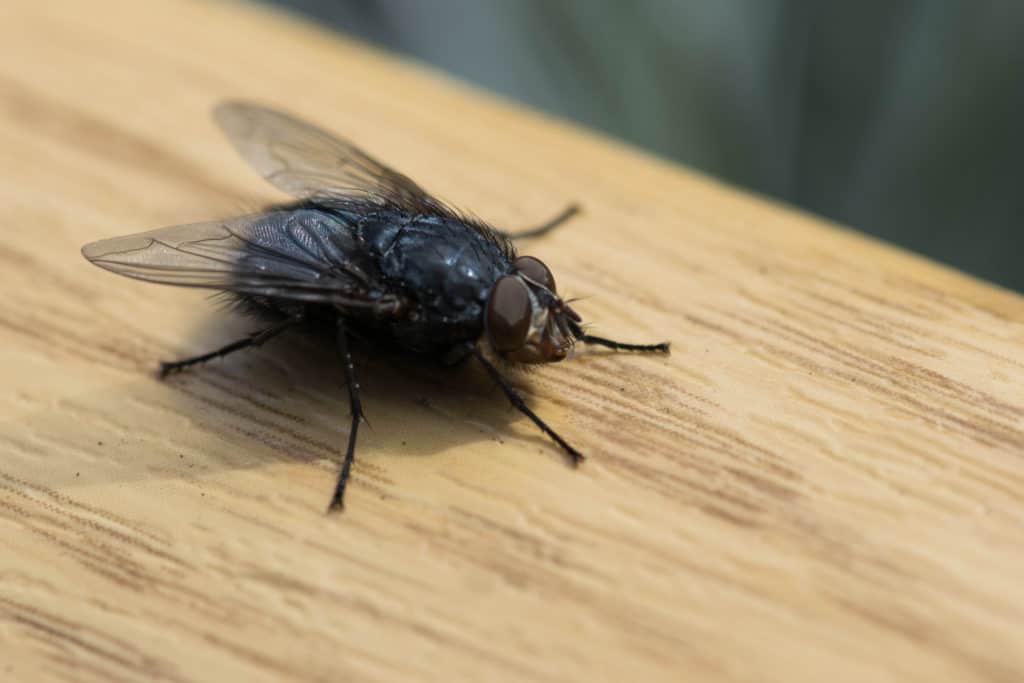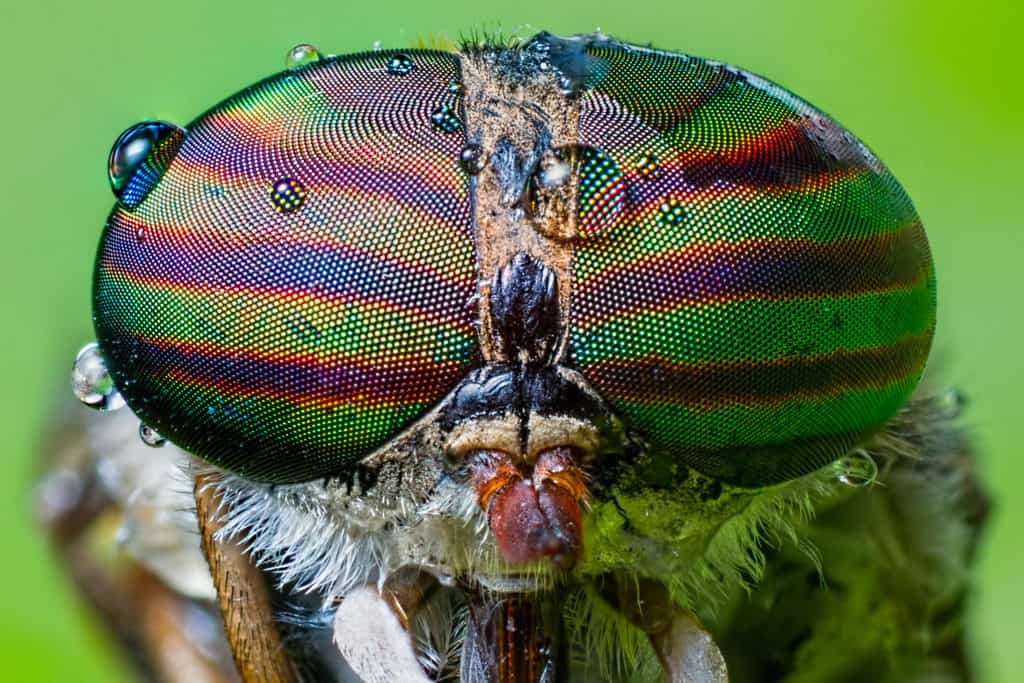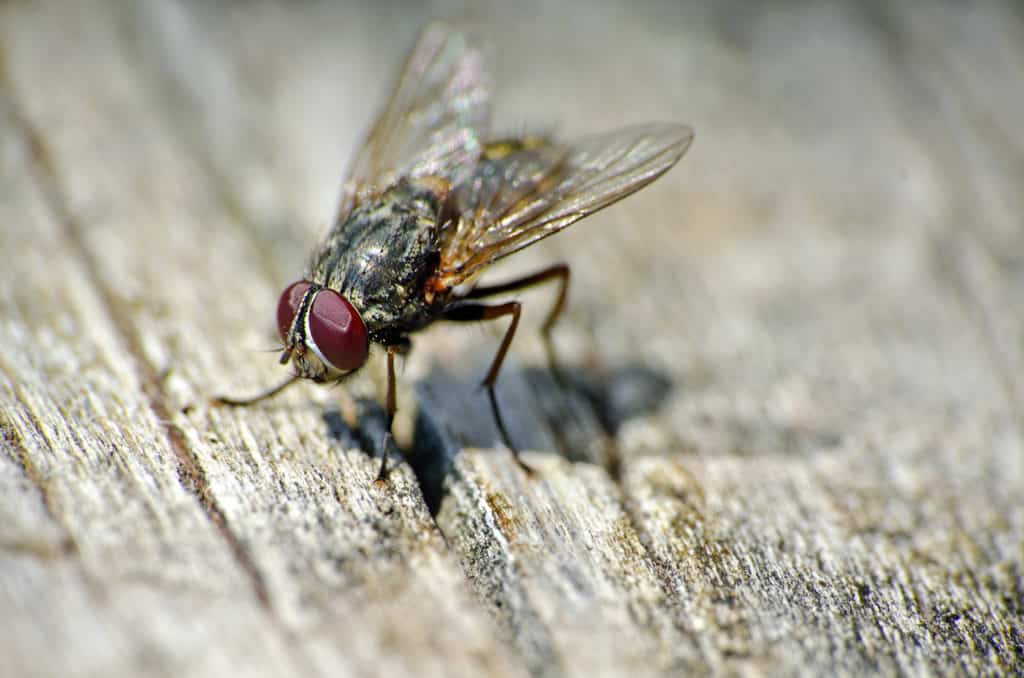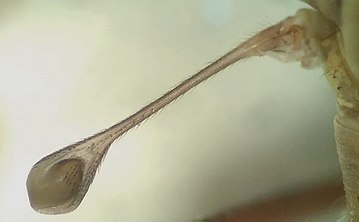Why are Flies so Hard to Hit with Swatters?
Why are Flies so Hard to Hit with Swatters?
Annoying Flies
Flies, if anything, are excessively ANNOYING. They may not be able to sting or cause home destruction, but we certainly don’t want them around. Their presence becomes increasingly frustrating when you, armed with your trusty fly swatter, fail time and time again to hit the elusive little insects. But don’t worry, you’re not alone. This is an all-too-common occurrence due to the fact that flies are actually built to avoid just such situations. Both their unique eyes and especially agile bodies allow them to quickly dart out of reach a maddening number of times. Here’s how they manage it…

Flies Eyes
The eyes of flies are very unique visual processing systems composed of a set of two compounded eyes known as ommatidia. Each blub-shaped eye is made up of a collection of smaller units shaped like flat octagonal panels. These units are not individual/full eyes with their own full visual fields, rather they act in tandem with one another like pixels melding together to create one very large cohesive image. This is the true benefit of the ommatidia – the scope of the image they are able to generate is rather massive. Most ommatidia produce a visual field spanning nearly 360 degrees around the insect itself, which is extremely useful for flies as they are simultaneously hunters and prey. Due to this, flies are actually able to see you when you’re sneaking up behind them… as long as they are paying attention…

Rapid Perception
Not only is their visual field impressive, but their ability to quickly process such a visual scope as well as other external stimuli is shocking. Their little bodies are covered in tiny hairs that can feel miniscule changes in air, allowing them to sense when something is moving near them. Even with their tiny brains, the simplistic house fly can process these kinds of external stimuli at a speed ten times faster than humans. So, in comparison, we appear dreadfully slow to the average fly. However… this does have a potential advantage… (stay tuned to find out why!)

Incredibly Agile
With such a rapid processing system, it’s no surprise that flies have lightning-fast agility to match. The secret to this lies in a super tiny appendage known as a haltere. This small, club-shaped part lies beneath their wings and is responsible for their athletic abilities. As they flap their wings, the fly’s halteres also move up and down sensing any changes in movements. These changes are then instantaneously translated into a series of muscles movements assisting with precision steering. Without their halteres, flies would not be able control their flight patterns and could lose their sense of proprioception (their perception of where they are in a given space). But, with this powerful natural tool intact, flies are experts at performing extreme agility stunts.

Your Best Bet…
As stated above, flies process information at a shockingly fast pace, making us seem slow to them. But, due to this very factor, they also do not see things that stay still very well. A research group of neuroscientists at Yale University studied this surprising phenomenon utilizing optical illusions earlier this year. The Associate Professor of Molecular, Cellular, and Developmental Biology, Physics, and Neuroscience at Yale, Damon Clark commented on the study, stating that “it was exciting to find that flies perceive motion… the same way we do.”
It was rather easy for the researchers to monitor the fly’s neurons in regard to their visual reception due to their small brains. While under this neurological scrutiny the flies were exposed to various different motion-based optical illusions. This allowed the team to identify which neuron types were firing in response. As it turned out, the same neurons that detect motion fired when faced with these illusions, proving that their eyes were being fooled by the “shifting” optical trick. This deduction was further supported by the physical reactions of the flies. Instinctively, flies will adjust their bodies to face any perceivable motion and the flies were continuously turning to face the optical illusions and were reacting to such perceived movements.
This proclivity for identifying movement, and at such a fast pace, means that things that are moving very slow are difficult for them to perceive as moving at all. As such, your best bet of sneaking up on that darn house fly lies in your ability to sneak up on it very, very slowly.

Citations
“Mechanism for Analogous Illusory Motion Perception in Flies and Humans” by Margarida Agrochao, Ryosuke Tanaka, Emilio Salazar-Gatzimas and Damon A. Clark, 24 August 2020, Proceedings of the National Academy of Sciences.
Quiros, G. and Klivans, L. (2020) Here’s How That Annoying Fly Dodges Your Swatter, YouTube. Deep Look. Available at: https://www.youtube.com/watch?v=jBPFCvEhv9Y (Accessed: December 2020).
Yale University Starr (2020) Optical Illusions Have Long Mystified Neuroscientists – Now Explained in a Fly’s Eyes, SciTechDaily. Yale University. Available at: https://scitechdaily.com/optical-illusions-have-long-mystified-neuroscientists-now-explained-in-a-flys-eyes/ (Accessed: October 2020).
Cold Weather vs. Warm Weather Infestations: How Temperature Shapes Pest Activity
Cold Weather vs. Warm Weather Infestations: How Temperature Shapes Pest Activity Cold Weather vs. Warm Weather Infestations: How Temperature Shapes Pest Activity Summary: [...]
Garden Pests Do Not Hibernate Indoors – How They Attack Houseplants And What To Do
Garden Pests Do Not Hibernate Indoors – How They Attack Houseplants And What To Do Garden Pests Do Not Hibernate Indoors – How They Attack [...]
The Scariest Pests (And Why They Freak Us Out)
The Scariest Pests (And Why They Freak Us Out) The Scariest Pests (And Why They Freak Us Out) Summary: A practical, homeowner-friendly guide [...]
Favorite Foods of Rats and Mice
Favorite Foods of Rats and Mice Favorite Foods of Rats and Mice Summary: Rats and mice are surprisingly picky about what they eat—especially [...]
Where Do Spiders Like to Hide? A Locals’ Guide to Sneaky Spider Spots (and What to Do About Them)
Where Do Spiders Like to Hide? A Locals’ Guide to Sneaky Spider Spots (and What to Do About Them) Where Do Spiders Like to Hide? [...]
Why Do We See So Many Pests in the Fall?
Why Do We See So Many Pests in the Fall? Why Do We See So Many Pests in the Fall? Summary: Fall’s cooler [...]

